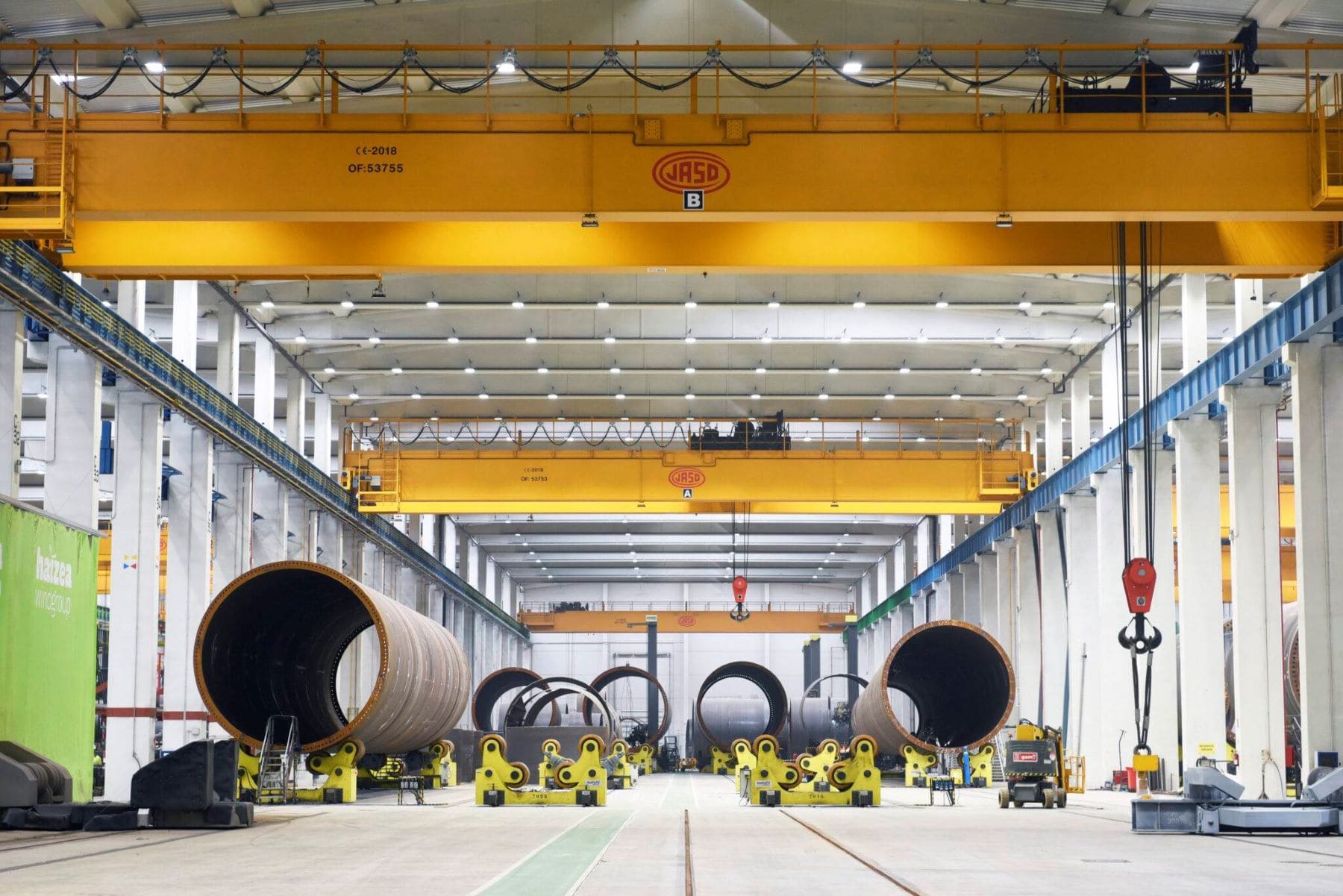Las wind towers, also called wind turbinesplay a key role in the transition to renewable energy sources, as they are responsible for collecting energy from the wind, which is then converted into electricity.
The kinetic energy of air flows is converted into electrical energy via a wind turbine. The extraction process relies on a rotor, which converts kinetic energy into mechanical energy. This goes to a generator, which converts it into electricity.
Wind towers made in Euskadi
The Minister of Industry, Energy Transition and Sustainability of the Basque Government, Mikel Jauregi, visited Haizea Wind at its headquarters in the Port of Bilbao. The purpose of the visit was to see with your own eyes the facilities of a strategic company for the sustainable energy sector in Euskadi.


During the visit they workshops for the manufacture of the various parts and components of the wind turbine towersas well as for monopiles. Haizea is currently producing 123 towers for the Noirmoutier and Le Tréport parks in France, both projects for SGRE, as well as 54 towers for GE Renewable Energy’s Dogger Bank B park. In addition, 50 monopiles will also be supplied for the East Anglia 3 marine park, developed by Scottish Power, a subsidiary of Iberdrola in the United Kingdom.
The company Haizea Bilbao, based in Zierbena, is a world leader in the production of wind turbines and is in which the Basque government participated through Ekarpenwhich holds approximately 20% of the company’s capital. The Haizea Wind Group employs more than 1,600 people, with a turnover of 400 million euros. Forecasts indicate that by 2025, maritime foundation activities will represent 58% of the group’s turnover, and offshore wind tower activities 19%.
As councilor Mikel Jauregi has emphasized: “Haizea Wind Group is one of the flagships of the Basque industry and so a global benchmark in the wind energy sectorsomething for which Euskadi is recognized and enjoys great international prestige. Haizea’s commitment to innovation is very important, as is the enabling effect it has on a large number of ancillary companies that are part of the wind industry value chain.
“Euskadi has the technology and industrial potential to make a qualitative leap in the deployment of renewable energy sources and Haizea Wind Group is a good example of this. Now we are clear that as a country we cannot afford to have only 8% of energy generation from renewable energy sources. The time has come to apply that potential at home encourage and accelerate the deployment of renewable energy sourcesIn that sense, wind energy represents a gamble for the future.
“Haizea Wind Group is also an example of how the energy transition is not only a challenge, but also an opportunity for our industry. When we talk about more and better industry, we mean a sector that is capable of it flag of commitment to technological innovation to meet future challenges such as the energy transition. To make progress towards the pledge to decarbonise Basque industry by reaching net zero emissions by 2050, the path is clear: work on energy efficiency, bet on renewables, increase self-generation and promote storage. Wind energy is essential on this path,” concludes Jauregi.

